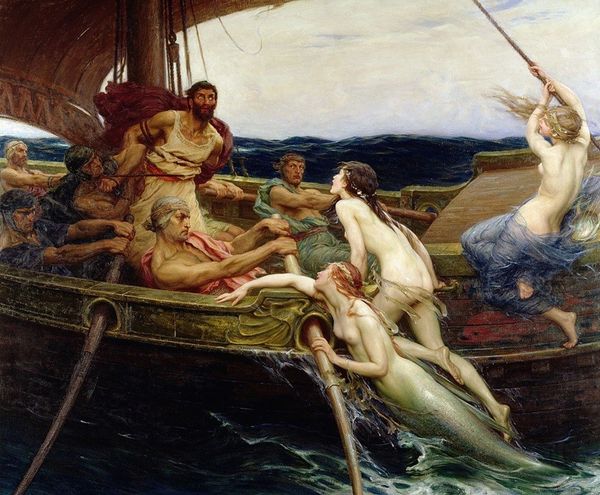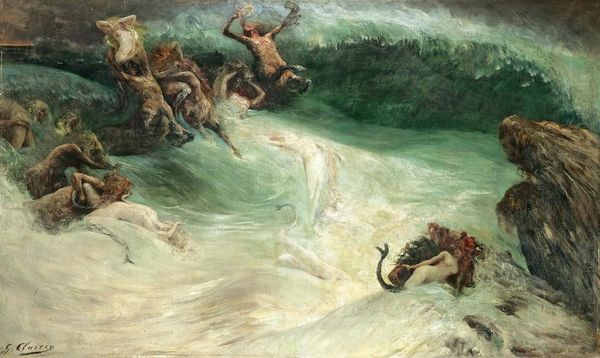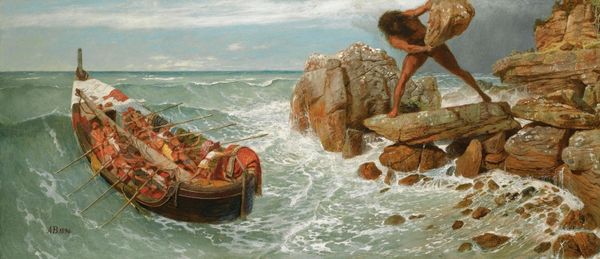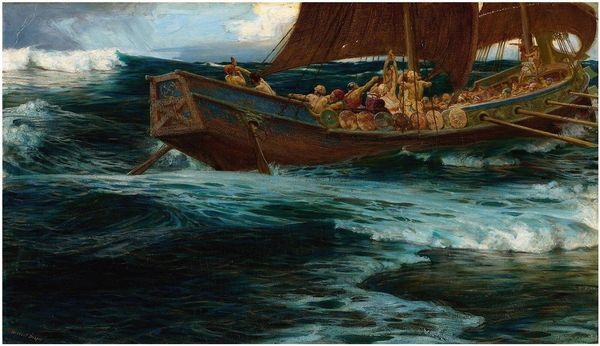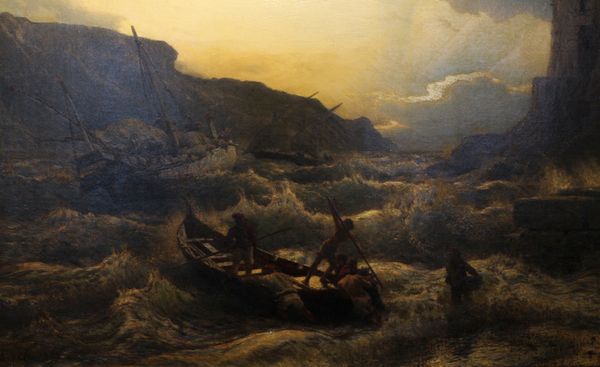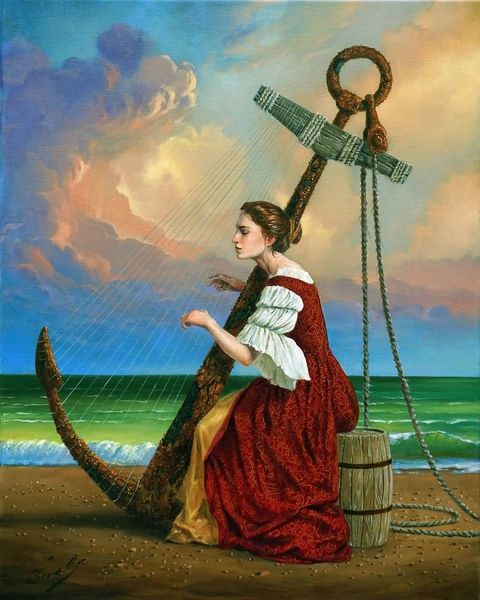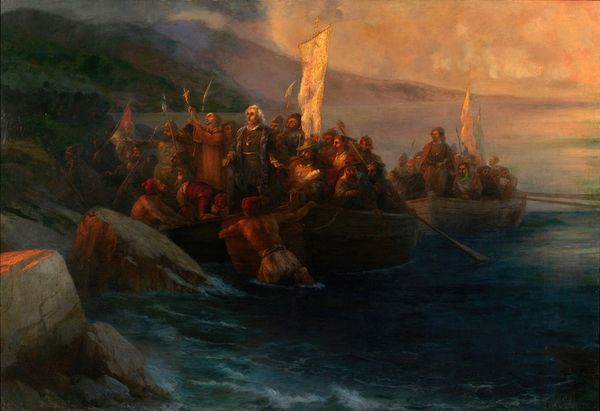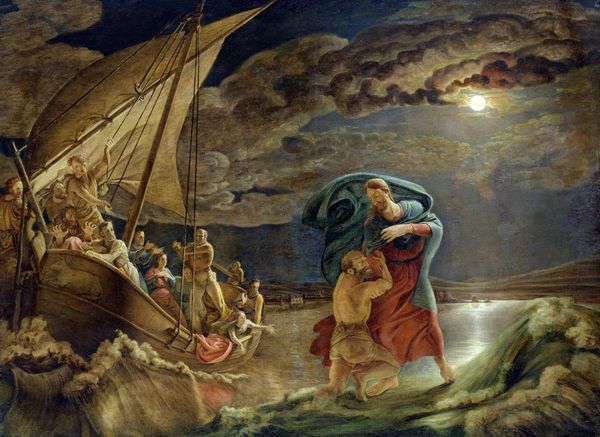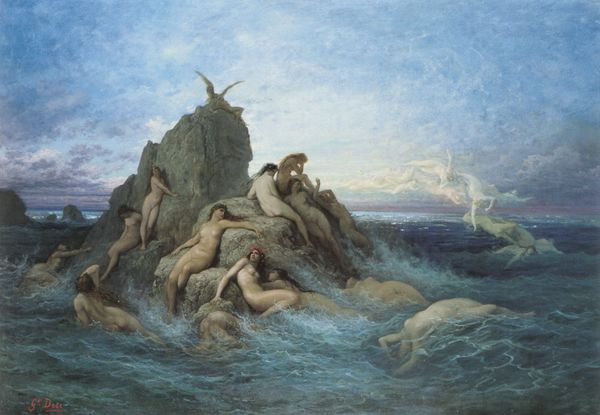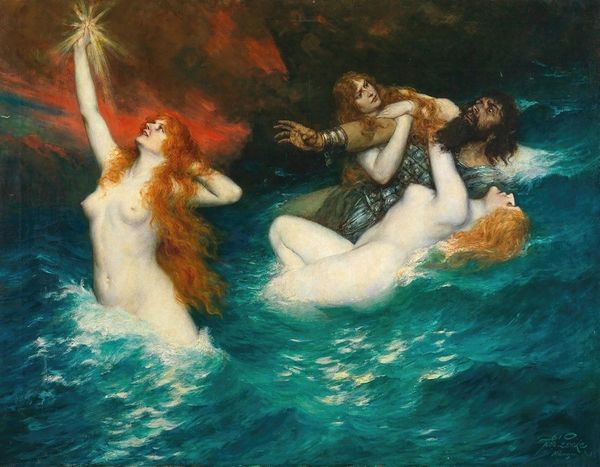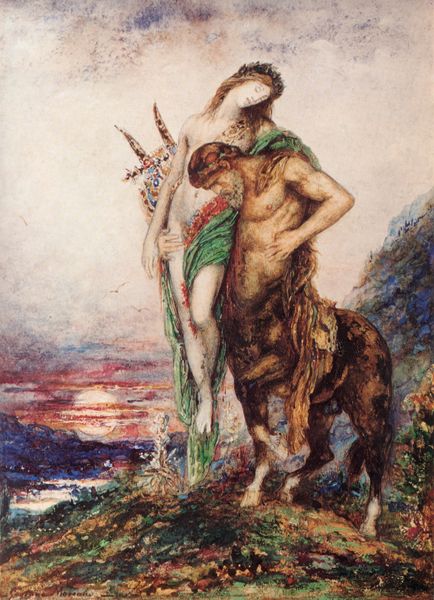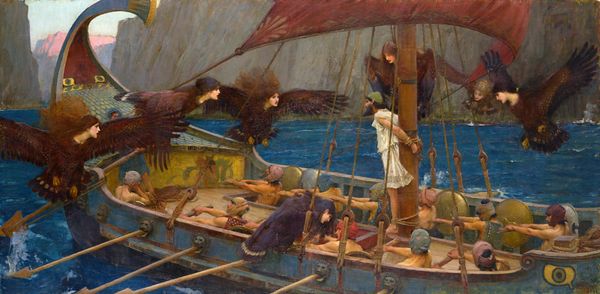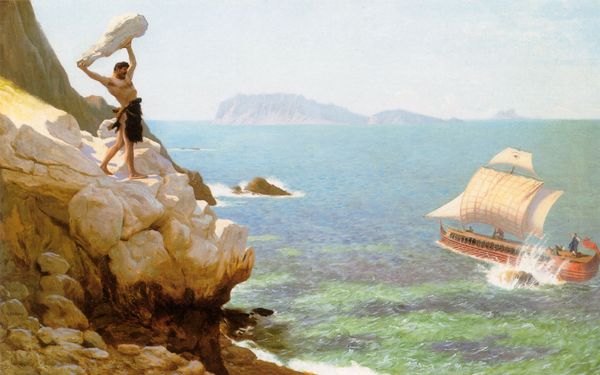
oil-paint
#
oil-paint
#
landscape
#
figuration
#
oil painting
#
romanticism
#
mythology
#
history-painting
Copyright: Public Domain: Artvee
Editor: This is Ferdinand Leeke’s painting, “Richard Wagner, Götterdämmerung, Act I, Siegfried’s Rhine Journey," painted with oil paints. I am immediately struck by how staged the figures look against what is otherwise a fairly romantic landscape. What do you see in this piece? Curator: This image speaks volumes through its deliberate visual cues. Look at Siegfried, seemingly taking a break on his journey, drinking from the horn. It is a triumphant, almost boastful, gesture. What does it bring to mind? Editor: An idealized vision of heroism? He certainly doesn’t seem worried. Curator: Exactly. Think about what the Rhine represents in Wagner's opera - a boundary, a source of power, and ultimately, the site of tragedy. Leeke is playing with our cultural memory of the story. Consider too, the horse. Editor: Yes! It’s an interesting detail…almost looks like it wants to get away. What does it symbolize here? Curator: Perhaps a representation of Siegfried’s own inner turmoil? The horse's tension hints at the inevitable doom, which acts as a subtle counterpoint to Siegfried’s apparent confidence. Editor: It’s as if Leeke has frozen a single, loaded moment – just before everything falls apart. I’m also thinking of landscape painting as part of Romanticism, maybe a statement on man versus nature and fate. Curator: Precisely. The cultural and psychological weight of the symbols makes this seemingly straightforward depiction a complex meditation on fate and heroic destiny. Seeing the art this way offers profound engagement. Editor: I learned how visual cues, rooted in cultural narratives, greatly influence our experience with this Wagnerian image. I’m seeing echoes between the horse and hero and also fate versus individual freedom. Thanks!
Comments
No comments
Be the first to comment and join the conversation on the ultimate creative platform.
